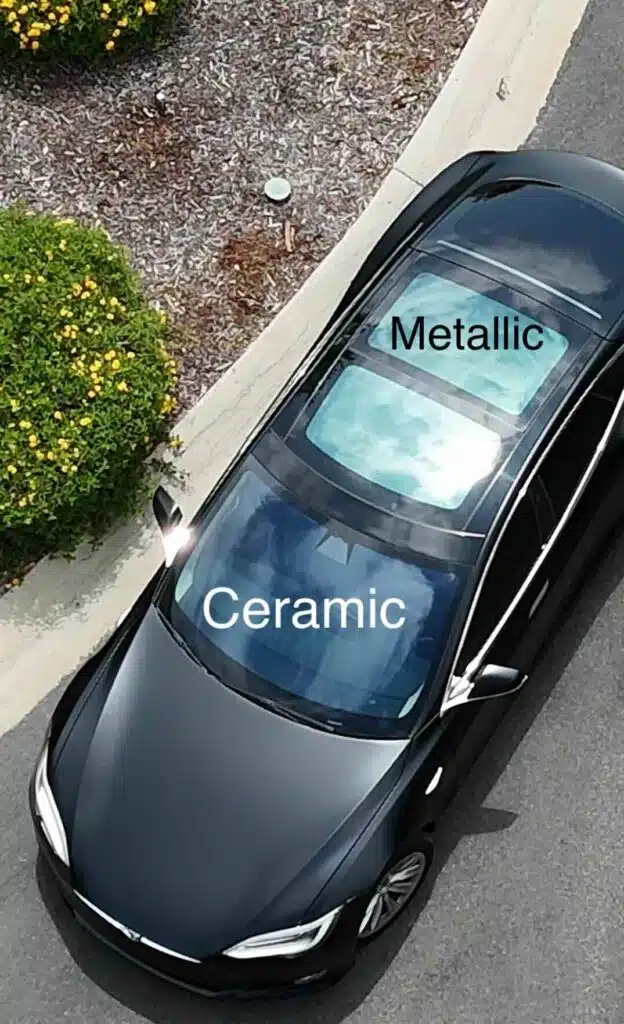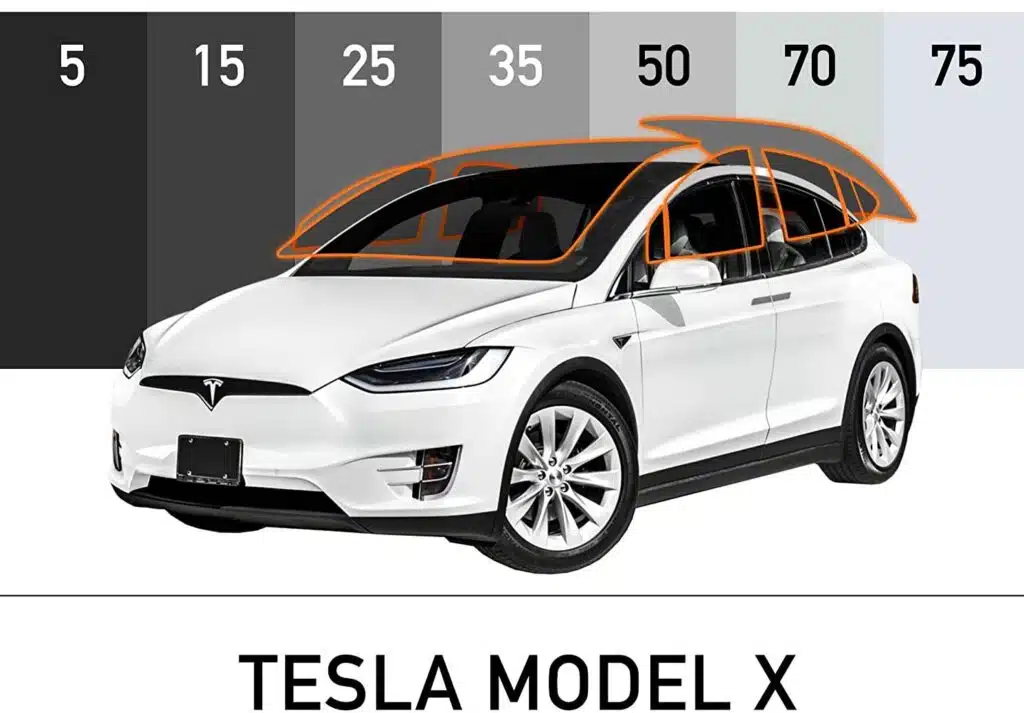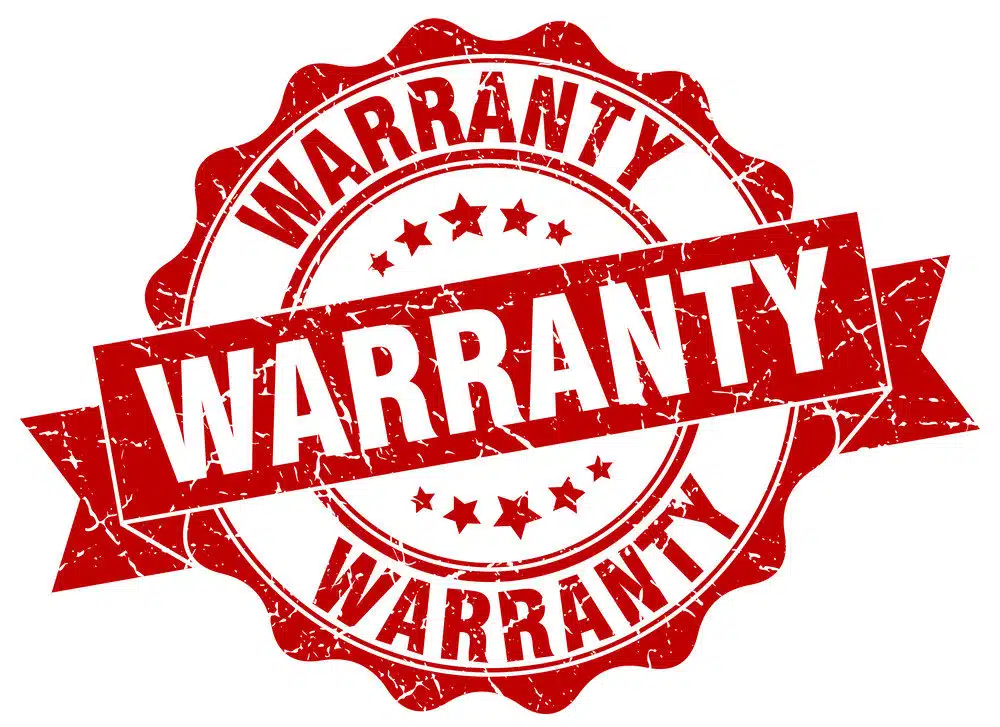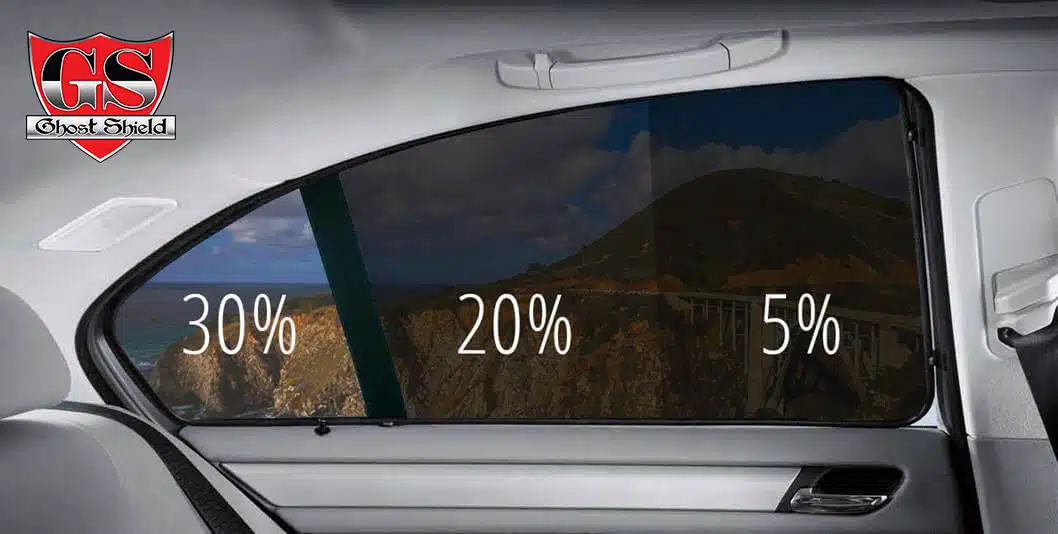Here is what you need to know about Window Tint
You may have heard about the different types of tint. Today, we get to the bottom of “Which Tint is best”. There are three popular types of tint: Dyed Tint (aka Standard), Metallic Tint, and Ceramic Tint. Understanding the differences between these popular options can make a significant difference in your vehicle’s comfort, style, and protection. Each type has its own unique features, performance levels, and cost implications, so understanding these differences can help you make the best decision for your needs.
When choosing window tints for your vehicle, it’s essential to understand how various tint percentages affect the look and performance of the tint. The most common window tint percentages include 30 percent ceramic tint, 5 percent tint, and 70 percent tint. The choice depends on factors like desired privacy, heat rejection, and UV protection. Here’s an overview of the main types of window tints and how they compare to ceramic 70 tint and carbon window tint percentages.
| Feature | Dyed | Ceramic | Metallic |
|---|---|---|---|
| Material Composition | Dyed or Metalized Film | Nano-Ceramic Particles | Metalized Film |
| Heat Rejection | ✔ (Moderate) | ✔✔✔ (High) | ✔✔ (Moderate to High) |
| UV Protection | ✔ (Basic Protection) | ✔✔✔ (Up to 99%) | ✔✔ (Good Protection) |
| Durability | ✔ (Can Fade or Bubble Over Time) | ✔✔✔ (Very Durable, Fade-Resistant) | ✔✔ (May Fade Over Time) |
| Clarity and Aesthetics | ✔ (May Reduce Visibility) | ✔✔✔ (Excellent Clarity) | ✔✔ (Good Clarity with Glare) |
| Electronic Signal Interference | ✔ (Possible with Metal Tints) | ✔✔✔ (No Interference) | ✔ (Can Interfere with Signals) |
| Price | ✔ (More Affordable) | ✔✔✔ (More Expensive) | ✔✔ (Moderately Priced) |
Key Takeaways:
- Ceramic Window: offers the highest heat rejection and UV protection while maintaining excellent clarity and durability.
- Metallic Window: provides good heat rejection and UV protection, but may interfere with electronic signals.
- Standard Window: is typically the most affordable option, but lacks the durability and performance benefits of ceramic and metallic.
The Visual Differences between Dyed, Ceramic, and Metallic.

As you can see from the picture above. Metallic tint is reflective, as ceramic tint and dyed tint are darker in visual appearance.
| Tint Type | Description | Visual Characteristics | Common Uses |
|---|---|---|---|
| Dyed | Made by applying a dye to a layer of film. | Typically darker, can look somewhat flat; may fade over time. | Budget-friendly options, sedans, and standard vehicles. |
| Metallic | Contains metal particles that reflect light. | Has a shiny or reflective appearance; can create a mirror-like effect. | High-end vehicles and those seeking extra heat reduction. |
| Ceramic | Composed of nano-ceramic particles that do not contain metal. | Offers a more transparent look; it can appear slightly darker without being reflective. | Luxury cars, high-performance vehicles, and those seeking high UV protection. |
Applications and Recommendations
Ceramic: If you’re looking for the highest level of comfort, heat rejection, and UV protection, ceramic (sometimes called nano-ceramic) is the way to go. It’s perfect for people who drive in hot climates and want to keep their vehicle cool without compromising visibility or electronic performance. However, caution is advised for Tesla sunroofs, where a very light ceramic tint or metallic tint is a better option to avoid heat buildup and glass cracking.
Standard (Dyed): If you’re looking for an affordable solution that provides privacy and UV protection without a large investment, dyed tint may be a good option. However, it’s best for drivers in moderate climates where heat rejection isn’t a top priority.
Metallic: For those who want enhanced heat rejection and don’t mind a reflective finish, metallic tint offers a durable, long-lasting solution. It’s a great choice for vehicles that spend a lot of time in sunny climates, though it may interfere with electronic signals in some vehicles. Metallic tint is also recommended for Tesla sunroofs due to its superior reflectivity.
What is Legal Tint in California?

In California, the rear two doors and the rear glass can be any percentage that you want. The front two doors on a vehicle can legally be tinted only 70%.
Windshields are illegal at any shade, but many people will often tint the front windshield at 70% for heat rejection.
Pro Tip: 70% is nearly clear and does little to change the look of the glass, making it hard to tell the window is tinted, but still offering heat rejection.
This is the most popular Tint shade in California: 70 Tint on front two windows and 5 Tint on rear window and windshield.
| Window Location | Standard | Ceramic | Metallic |
|---|---|---|---|
| Windshield | N/A (Not typically tinted) | 70% | 70% |
| Front Windows | 35% | 30% | 20% |
| Back Windows | 20% | 20% | 5% |
Can I tint my front windshield in California?
Legally speaking, no. Front Windshield tint is illegal in California. However, many who get 70 tint or 50 tint on the front never have issues with law enforcement. So you are only likely to get into trouble if it’s noticeably darker.

How Much Does Window Tint Cost?
This depends on factors such as:
| Factor | Description | Impact on Price |
|---|---|---|
| Type of Tint | Different types of tint (Dyed, Metallic, Ceramic) vary in price. | Higher quality tints (like Ceramic) generally cost more. |
| Vehicle Size | Standard cars vs. larger vehicles (SUVs, vans) require more material. | Prices increase with larger vehicle sizes. |
| Number of Windows | More windows mean more labor and materials. | Increased cost for additional windows. |
| Labor Costs | Installation expertise and time required can vary. | Professional installation may add to the overall cost. |
| Geographic Location | Prices can vary based on regional market rates. | Higher demand areas may have higher prices. |
| Additional Services | Services like removal of old tint, cleaning, or warranty options. | Extra services can increase the overall price. |
| Promotions and Discounts | Seasonal promotions or package deals may be available. | Discounts can lower the final price. |
Window Tint Ball Park Figures:
| Type of Tint | Ballpark Figures ($) | Most Used Applications |
|---|---|---|
| Standard (Dyed) Tint | $100–$300 | Residential, budget-friendly automotive, privacy for personal vehicles, and Tesla/Glass Roof |
| Metallic Tint | $200–$500 | Automotive (SUVs, trucks), commercial buildings, enhanced privacy and glare reduction, and Tesla/Glass Roof |
| Ceramic Tint | $400–$800+ | High-end automotive, luxury vehicles, and residential applications seeking maximum heat rejection and UV protection |
Does Tint come with a Lifetime Warranty?

Typically Yes! Confident installers such as Ghost Shield Film know that their install is guaranteed to last. Which is why they offer a lifetime warranty on all installs without losing a wink of sleep.😴
Does Window Dark Tint Affect Visibility at Night?

That will depend on what shade you choose. 5% limo tint will make it more challenging to see out of the vehicle at night. A 70% tint will make very little difference in nighttime visibility.
We do not recommend going past 30% on front door windows as it will begin to drastically affect low nighttime visibility. To play safe, we say stay above 35%.
Which Tint is Best for You?
- Dyed Tint (Most Affordable Tint): If you’re on a budget and just want a simple, dark aesthetic for privacy without worrying too much about heat or UV protection, dyed tint is a good choice.
- Metallic Tint (Most Reflective Tint): A solid choice for those who want better heat rejection and UV protection than dyed tints and can tolerate the reflective surface. However, if you rely on electronic devices in your car, metal may not be the best choice.
- Ceramic Tint (Heat Rejection Tint) Best for those seeking the ultimate in heat and UV protection, without compromising on durability or signal interference. This is the top choice for people who want superior comfort, protection, and a high-end look, and are willing to pay more for it.
Ghost Shield Film provides a premium, high-performance solution for those seeking optimal heat rejection, UV protection, durability, and signal clarity. It delivers superior comfort, longevity, and aesthetic appeal, making it an excellent investment for long-term benefits. For anyone prioritizing quality, protection, and comfort, this ceramic tint stands out as a top choice.
Enhancing your vehicle with tinted windows goes beyond just improving its appearance—it’s about comfort, protection, and performance. For those looking for a budget-friendly solution, dyed film provides a classic look and moderate UV protection. However, for better heat rejection properties and improved durability, carbon tints offer a sleek, non-reflective finish and exceptional performance without compromising on visible light transmission or interfering with electronic devices.
Choosing the right window film can make a significant difference. Whether you’re comparing types of tint, such as dyed vs ceramic tint, or weighing the benefits of different window tint percentages, understanding the balance between visibility and protection is key. High visible light transmission, such as a 70 percent tint, offers substantial heat rejection properties while maintaining a natural view. For those who prioritize privacy and blocking sunlight, options like 5 percent tints excel. We take pride in offering only the highest quality window films, ensuring your vehicle receives the best in UV protection, durability, and overall performance. Explore our range and experience the superior rejecting properties that set our products apart.
Check out our YouTube channel
FAQs for Window Tinting
[sc_fs_multi_faq headline-0=”h4″ question-0=”Is Carbon or Ceramic Tint Better?” answer-0=”Ceramic is typically better than carbon. Ceramics provide superior heat rejection, UV protection, and clarity. While carbon offers good heat reduction and durability, ceramic films generally perform better long-term, without causing signal interference.” image-0=”” headline-1=”h4″ question-1=”What Is the Best Tint to See Out Of?” answer-1=”Ceramic, especially with percentages like 30% or 35%, offers the best visibility while providing heat rejection and UV protection. They are non-reflective, unlike metallic, and maintain clear visibility, making them the best option for seeing out of the vehicle.” image-1=”” headline-2=”h4″ question-2=” Is 20% or 35% Tint Better?” answer-2=”The choice between 20% and 35% depends on your preference for privacy and light exposure. 20% provides more privacy but also blocks more light, which can reduce visibility, while 35% offers a more balanced level of privacy and clarity. 35% is typically better for front windows in many regions due to legal requirements.” image-2=”” headline-3=”h4″ question-3=”What Is the Darkest Legal Tint?” answer-3=”The darkest legal tint depends on your location, but in many areas, 35% is the darkest allowable for front side windows. For rear side windows and back windows, you may be able to go as dark as 20% or even 5%, depending on your region’s regulations.” image-3=”” headline-4=”h4″ question-4=”Is Ceramic Tint Easier to See Through?” answer-4=”Yes, ceramic tint is typically easier to see through compared to other tint types like metallic tints, which may have a reflective surface. Ceramic films offer great visibility while blocking heat and UV rays, making them one of the most transparent and effective options.” image-4=”” headline-5=”h4″ question-5=”How Dark Is 35% Window Tint?” answer-5=”35% window tint allows 35% of visible light to pass through, which gives a moderate level of darkness. It provides a good balance of privacy while still maintaining clear visibility, making it a popular choice for front side windows in many areas.” image-5=”” headline-6=”h4″ question-6=”What Tint Lasts the Longest?” answer-6=”Ceramic lasts the longest among all tint types. Ceramic films are highly durable, resistant to fading and discoloration from the sun, and maintain their performance and clarity over time, providing long-term protection against UV rays and heat.” image-6=”” headline-7=”h4″ question-7=”Is 20% Tint Too Dark?” answer-7=”20% is considered very dark, especially for front windows, providing maximum privacy and UV protection. However, it significantly reduces visibility, particularly at night, and may not be legal in all regions for front side windows. It’s often used for rear windows where more darkness is acceptable.” image-7=”” headline-8=”h4″ question-8=”Is 30% Tint Too Dark?” answer-8=”30% is not too dark for most vehicles. It provides a moderate level of privacy while allowing decent visibility. It’s a great option for front windows, offering a balance of privacy, comfort, and performance without reducing visibility too much.” image-8=”” headline-9=”h4″ question-9=”What Is the Difference Between 35% and 50% Tint?” answer-9=”35% allows 35% of visible light to pass through, providing a good balance between privacy and visibility. In contrast, 50% allows more light to pass through, offering less privacy but better visibility. 50% is often chosen when minimal tint is desired, offering light protection while maintaining clear sightlines.” image-9=”” count=”10″ html=”true” css_class=””]
Live in Southern California? We are located in Ventura County.
